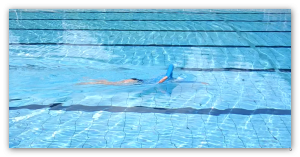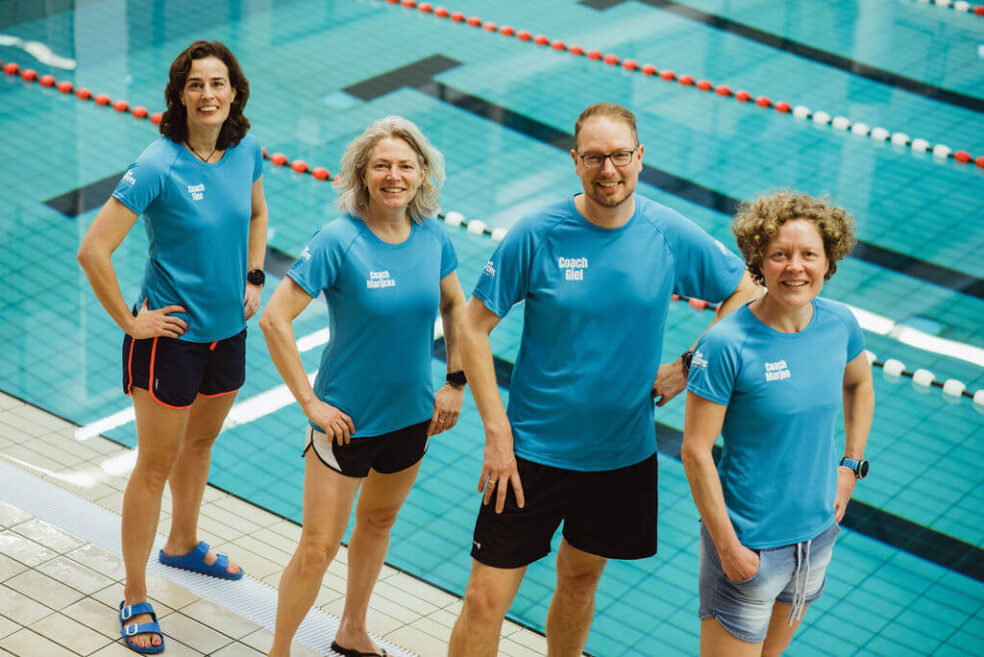Photo by Amy Kouwenhoven
Welcome at Swimfantastic. We are convinced that learning how to swim (better) is more fun when you know how to and when you get personal attention while getting more efficient or faster. We are based in Amsterdam and have different formulas that suit your schedule. Do you want to learn about how to change our stroke and are you willing to practice the new movement? Send us a message through the contactform when you have any question. Looking forward to swim with you! Read what clients gave as feedback to us on this page.
When you want to make a change, you can and you’ll be more efficient
Whatever your reasons for swimming—recreation, fitness, endurance, or speed–your chances of success and satisfaction will increase enormously if you approach swimming as a game of skill—rather than test of endurance. Our instruction puts you at ease in the water, then teaches you to cleverly adapt human anatomy to swim more like an aquatic mammal.
A step by step approach to swimming better
When you learn what is holding you back and you want to make a change, you can. We follow these steps:
What prevents you from moving forward?
we analyse it together
We work on it step by step
and you improve continuously
Swim free of injury
or pain
Learn Balance and Core Stability. These foundational skills replace that sinking sensation with a comforting (for some, thrilling!) sense of being ‘weightless’ in the water.
Be streamlined keeping the controled feeling.
Learn how to move forward!

Do less, move more
Because water is 1000 times denser than air, water resistance (drag) is the largest factor limiting how far or fast we swim. Fish and aquatic mammals are naturally streamlined. For human swimmers it’s a learned skill.
Because there are two forms of drag, we teach two ways of streamlining:
- Pressure drag is resistance that builds up in front of your body as you move through the water. Bulky or constantly-changing shapes create far more resistance than an unchanging and sleek shape.
- Wave drag is energy diverted from locomotion into moving water around—i.e. making waves, turbulence, bubbles, and splash. Any energy you expend moving water around isn’t available to move you forward.
We minimize these two forms of drag by teaching these skills:
- Shape Your ‘Vessel.’ This step is inspired both by the streamlined shape of fish and aquatic mammals and by the principles naval architects use in shaping vessels to minimize pressure drag. Apply it to the human form by extending your body—head, limbs and torso–into a long, slippery shape. Mindfully strive to minimize deviation from this shape as you stroke and breathe.
- Don’t Make Waves. Minimize Wave Drag by striving trying to minimize wavemaking, bubbles, splash, and even noise. All are evidence of energy being diverted from locomotion into moving the water around. The farther and faster you swim, the bigger the payoff from doing so with quiet strokes.
Move From Your Core
In traditional technique, the arms and legs do the lion’s share of the work, while the core body is passive baggage. We invert that dynamic initiating all movement, power, and rhythm in the core—the most naturally powerful and fatigue-resistant part of the body.
We teach you to carefully integrate the movements of the head, arms, and legs with rhythms initiated in the core. Power originates in the core and flows to the arms and legs. The better that integration, the less work it takes to swim farther and faster. I.E. The same level of fitness will take you farther.
What about Breathing?
It’s obvious that breathing is both the most essential and most challenging of all skills. Development of seamless breathing skill is integral to every step. When you are comfortable and in control of your body, breathing is far easier. When you maintain a long, sleek shape while breathing, you conserve both momentum and power. And finally, it’s far easier to get that breath when the energy for moving your mouth to the air comes from core rotation.



